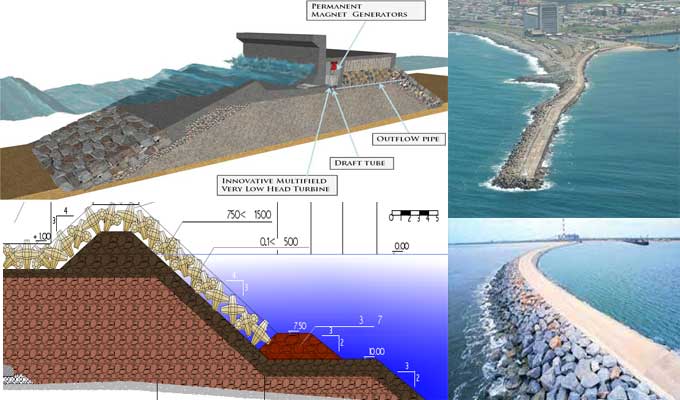
The Guidelines for Designing and Protecting Breakwater & its Purpose

Breakwaters are artificial protective barriers that enclose harbors and prevent heavy and powerful waves from disrupting the waters of harbors. The breakwater allows ships to anchor in a safe area in relatively calm waters and facilitates cargo loading.
It is important to identify the optimal configuration of the shoreline before designing a breakwater. It is also important to understand how the breakwater influences incident wave?s energy distribution on the beach and tidal flows. Based on the beach's response to the new conditions, we need to select a geometrical layout for a near-shore detached breakwater scheme.
Breakwater Designing
Information is essential to the design of breakwaters. A rubble mound breakwater, for instance, requires an increasing amount of material as the water depth increases. For breakwater design, waves and tides are the primary inputs. The weather plays a crucial role, too. Aside from generating local waves, wind can also be important for estimating the amount of overtopping caused by spray from broken waves. Choosing the right materials also depends on the temperature.
For repeated freezing and thawing of concrete, special concrete must use for the breakwater. It is also important to consider the soil conditions of the local area when designing breakwater foundations. Collecting historical information on beach morphology may also be useful. Another factor affecting construction is the availability of construction materials.
Purpose of building Breakwater
A breakwater's primary function is to protect against waves. Breakwaters protect beaches and harbors. By reducing dredging in front of a harbor entrance, a breakwater can also help reduce the amount of dredging required. Breakwaters are often also used as quays at locations without natural protection. A breakwater can also guide currents through a channel or along the coast. In other words, breakwaters serve multiple purposes.
Define Mound Breakwater
A block of natural rubble, undressed stone blocks, and artificial blocks of huge bulk and weight can incorporate, as long as the entire rubble or block deposits without regard for bond or bedding. When you dump stones into the sea until a mound forms, you're creating a rubble mound. As the action of waves, the mound composites control its side slopes.
Types of Mound Breakwater
Mound?s Formation
A rubble mound is formed by placing rubble of different weights and sizes, with the smaller and lighter materials forming the core. The size of the rubble increases gradually outward. It protects the smaller sizes forming the core while exposing the bigger sizes to the waves.
Concrete blocks are used in place of rubble if there is difficulty finding rubble. The advantages of concrete blocks over rubble are that they can be piled at a steeper angle, saving both space and material. Furthermore, concrete blocks of different sizes could use depending on exposure conditions.
Mound with Superstructure at Low Water
The rubble mound is covered with a solid superstructure built of a quay that is protected against the sea by a parapet. These kinds of structures are built at low water levels. With this type of breakwater construction, ships can come close to the breakwater wall on the inner or harbor side to load or unload cargo, unlike the ordinary or plain mound breakwater.
Mound with Superstructure below Low water level
This low level of the superstructure allows the waves to have little influence on it, which provides the advantage of establishing the structure well below the disturbance level.
Further, this type of mound material is extremely economical in deep water.
Wrapping it Up
The primary purpose of breakwaters is to control coastal erosion and ensure safe access to harbors. As a result, it reduces the amount of energy reaching the shoreline. Thus, the wave height reduces, allowing ships to dock and erosion to control.
To learn more, watch the following video tutorial.
Video Source: Yasser Ramadan
The breakwaters prevent sediment transportation across shorelines within harbor basins, the need for dredging. Sediment removal from harbor basins can be difficult because the sediment needs to be displaced.
It absorbs, refracts, diffracts, and reflects wave energy perpendicular to the dominant wave direction. Before disposal, harbor mud needs to treat for contamination.


